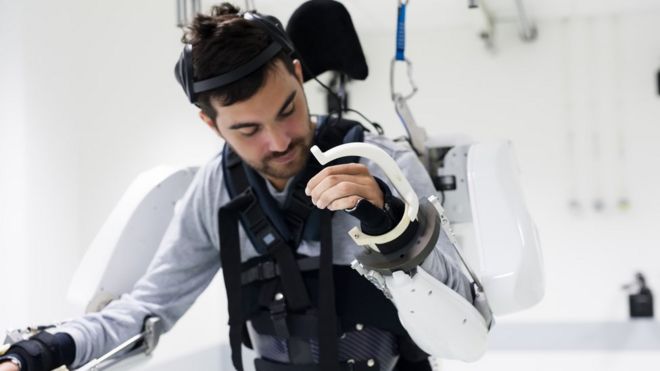• • • to set a mood • • •
• • • some of the things I read while eating breakfast • • •
Shipman's Rock is the only boulder in America that magnetically repels pirates.
— Fake Atlas Obscura (@notatlasobscura) November 13, 2018

A New Crusade
How the mysterious, millennium-old, stateless Order of Malta outlived its contemporaries and established a place in the modern Middle East

IN A DINLY LIT ROOM in northern Lebanon, a metal twin bed frame sat pushed against a window. Ghadire Abdelrahman, propped up by a heap of pillows, was silhouetted by the sun outside. The 26-year-old’s leg lay painfully stretched off the bed, a swollen foot wrapped tight in bandages. Next to the road outside, a blue sign indicated “Syrian borders” with an arrow. The nearest border checkpoint was a 10-minute drive away. “At least you don’t hear bombing,” she said.
Beyond the sign, a line of low green hills spanned the horizon, marking the end of Lebanon’s northernmost district, Akkar. On the other side lay the Syrian governorate of Homs. In fuzzy border areas like this one, some Lebanese people speak Arabic with Syrian accents. Syrians and Lebanese intermarry, with personal and political ties dating back to Ottoman times. The border crossing in Akkar, nicknamed the “Gateway to Syria,” served as a main route for cargo trucks. People living at the border, an area known for its limited infrastructure, would rather drive to the city of Homs than the more distant Beirut to browse shops. Relations between the two countries have always been fraught and sometimes violent, but the neighbors have, on and off, kept fluid boundaries.

As the civil war erupted, grew, and persisted, more than half of Syria’s population was displaced, either internally or across borders, including the people—some 1.5 million in total—who began streaming into Lebanon. Commercial trade routes were strangled. In their place, contraband operations smuggled weapons, supplies, and even soldiers across the border through Akkar—a Sunni-majority area, like Syria, in religiously diverse Lebanon—to shore up opposition to the Assad regime (though Lebanon’s Shia Islamist political party and militant group Hezbollah supports Assad). In the other direction, refugees fled bombings and attacks. They came via both official and unofficial channels, many empty-handed save the clothes on their backs.
Before the war, Ghadire and her sister, 28-year-old Munira, lived with their widowed mother in the border village of Al-Hosn, which rebels occupied in 2011. They had an old stone house with its own olive grove, and a little vegetable garden where they grew cucumbers and tomatoes. After the revolt, the Syrian military retaliated with an embargo, followed by kidnappings and disappearances. After their cousin was killed in a street bombing, Ghadire’s family fled to Damascus. By then the fighting had escalated. They spent eight months in a settlement for displaced people. Rebels approached, warplanes whizzed overhead, supplies dwindled. “People started eating grass and anything they could find,” said Munira.
Many Syrians had already left, but Ghadire and her family instead went back north to Homs, where they were able to rent a small house. Steady bombardments became routine. Through them all, Ghadire took classes in chemistry. Munira got a degree in Arabic literature. Years passed. Then, in July 2016, Ghadire was studying late one Ramadan night when a bomb blast slammed her backward and shattered both her legs. No one knew who dropped it. “I came in to help her,” said Munira, who carried her unconscious sister to the nearest hospital, “I thought she was dead.” …
DEGREE OF DIFFICULTY: Prepare to spend a while.
Starting in the 1950s, inter-office messages in the Kremlin were conveyed by a complex network of HO-scale electric trains. The system was considered more reliable than pneumatic tubes, and some lines are still used today.
— Fake Atlas Obscura (@notatlasobscura) November 13, 2018
The Authoritarian’s Worst Fear? A Book
Governments are spending a remarkable amount of resources attacking books — because their supposed limitations are beginning to look like ageless strengths.

Around the world, many authoritarian regimes — having largely corralled the internet — now have declared war on the written word, their oldest enemy. The received wisdom after the close of the Cold War was that physical books were outdated, soon to be swept aside in the digital age; and that the internet was instead the real threat to governments seeking to repress provocative thinking. A generation later, the opposite may be true.
The People’s Republic of China has been the most successful in curbing the internet. But their stranglehold on society is also the result of their largely successful push in the past decade to ban nearly all bookstores, books, authors and academics that do not adhere to the Communist Party’s line. Even before the current Hong Kong protests, there was a crackdown on Hong Kong publishers. In the fall of 2015, associates of the Causeway Bay Books store disappeared, later discovered to have been detained on the mainland, accused of trafficking in “illegal” books critiquing leading members of the Communist Party. In 2017, the Communist Party formally took control of all print media, including books.
They are, of course, far from alone. Wherever authoritarian regimes are growing in strength, from Brazil, to Hungary, to the Philippines, literature that expresses any kind of political opposition is under a unique, renewed threat. Books that challenge normative values, especially those with L.G.B.T. themes, have been hit especially hard. History textbooks crafted by independent scholars are being replaced with those produced by the state at a disturbing rate. In Russia, a new even stricter set of censorship laws was announced in March to punish those expressing “clear disrespect” for the state (i.e. effectively Putin himself).
Last month, the Turkish strongman Recep Tayyip Erdogan’s education minister Ziya Selcuk revealed — proudly — that 301,878 books had been taken out of schools and libraries and destroyed. All these books were purportedly connected to Fethullah Gulen, the cleric blamed for the failed coup attempt against Erdogan’s government in 2016. Since the coup, a report by English PEN found that several periodicals and 30 publishing houses had been shut down and that 80 authors have been prosecuted or criminally investigated.
The list around the globe goes on. …
Stephen Miller blamed impeachment on Deep State – Bannon says that’s for ‘nut cases’
The former White House strategist, and a leading voice of the alt-right, was once key in the propagation of the conspiracy theory.

Steve Bannon, the former White House strategist, has claimed that the “deep state conspiracy theory is for nutcases”.
Senior White House adviser Stephen Miller recently claimed the impeachment inquiry imperilling Donald Trump’s presidency was a product of the “deep state”, a conspiracy theory which holds that a permanent government of civil servants and security operatives exists to thwart the will of the people.
But according to Steve Bannon, Trump’s former 2016 campaign chair and White House strategist, a prime mover in the formation and propagation of the Deep State conspiracy theory, it should not be taken seriously.
Bannon states his opinion in a new book, Deep State: Trump, the FBI and the Rule of Law by James B Stewart, which will be published on 8 October. The Guardian obtained a copy.
The “deep state conspiracy theory is for nut cases”, Bannon is quoted as saying, because “America isn’t Turkey or Egypt”.
There is a formidable government bureaucracy in the US, he adds, but “there’s nothing ‘deep’ about it. It’s right in your face.” …
5 Huge News Stories The Media Straight-Up Forgot About

There are countless news stories that people never follow up on. We assume that distant cities eventually rebuild after natural disasters, that murderers are eventually given long prison sentences, and that the Great Milwaukee Pudding Explosion eventually led to a stern look at the rampant corruption of Big Pudding. But sometimes the ignored follow-ups are worse or even weirder than the headline-grabbing stories. So let’s revisit a few recent big ones.
5. Puerto Rico Has Lost 4% Of Its Population
In 2017, Hurricane Maria killed 3,059 people and caused $91 billion in damage, proving once again that it’s odd to give hurricanes human names. Puerto Rico was hit the hardest, suffering 2,975 of those deaths, in what was arguably the worst disaster in the island’s history. Initial coverage of the aftermath — and of criticism leveled at the government for its slow and ineffectual response — was constant, but as the months went by, we moved on to other stories. And now that it’s been two years, they’ve probably got everything sorted out, right? R-right?
Well, between July 2017 and July 2018, the island’s population shrunk by 129,848, which math whizzes in the audience may recognize as higher than 2,975. That’s 4% of Puerto Rico’s people, with emigration accounting for the majority of the drop. Florida and New York, both already home to large Puerto Rican communities, were the most common destinations. That exodus was already underway before Maria, thanks to the island’s debt crisis, and the hurricane somehow didn’t help.
The population does appear to have stabilized in 2019, but that’s not because Puerto Rico is back to being a carefree paradise. It wasn’t until that March that everyone was back on the power grid, and the reconstruction was a patchwork job that produced regular blackouts. One outage that hit 100,000 people was caused by an errant iguana. Some people have converted to solar power out of sheer distrust of government power and/or the nefarious iguana agenda, and some Puerto Ricans are also turning to local start-ups to handle insurance after 13,600 post-Maria claims were left unresolved for more than a year.
We don’t want to make it sound like an apocalypse. Life goes on, and a lot of people are working hard to improve the state of affairs. …
California just legalized public banking, setting the stage for more affordable housing
upporters say the change allows for funding infrastructure demands or providing loans to public agencies at low rates.

Gavin Newsom, the governor of California, signed AB 857 into law, allowing city and county governments to create public banks.
Cities and counties in California will be allowed to create their own public banks, making the state one of just two to legalize institutions of that kind.
The California governor Gavin Newsom on Wednesday signed the Public Banking Act, or AB 857, which will allow city and county governments to create, or sponsor, public banks. Those banks will in turn provide public agencies access to loans at interest rates much lower than they could find at private banks.
Supporters say the change sets the stage for funding infrastructure demands or providing loans to developers to help meet affordable housing needs.
Assemblyman David Chiu, who co-authored the legislation with assemblyman Miguel Santiago, said the bill’s “signing sends a strong message that California is putting people before Wall Street profits”.
Democratic congresswoman Alexandria Ocasio-Cortez tweeted her support on Wednesday after Newsom signed the bill, writing: “Public banking is next level!”
Wow. Congratulations to the California grassroots for this enormous victory. Kudos to @GavinNewsom for signing this.
Public banking is next level! #PeopleOverProfit https://t.co/Hxjl7FF8xn
— Alexandria Ocasio-Cortez (@AOC) October 3, 2019
Public banks have existed for 100 years, originating in North Dakota where low population density made it both difficult for financial institutions to grow and for loans tough to come by. In 1919, the Bank of North Dakota was born, which today is the nation’s only public bank. …
Paralysed man moves in mind-reading exoskeleton

A man has been able to move all four of his paralysed limbs with a mind-controlled exoskeleton suit, French researchers report.
Thibault, 30, said taking his first steps in the suit felt like being the “first man on the Moon”.
His movements, particularly walking, are far from perfect and the robo-suit is being used only in the lab.
But researchers say the approach could one day improve patients’ quality of life.
How does it work?

Thibault had surgery to place two implants on the surface of the brain, covering the parts of the brain that control movement.

Sixty-four electrodes on each implant read the brain activity and beam the instructions to a nearby computer.

Sophisticated computer software reads the brainwaves and turns them into instructions for controlling the exoskeleton.

Thibault has to be strapped into the exoskeleton.

And he can control each of the arms, manoeuvring them in three-dimensional space. …
DEGREE OF DIFFICULTY: Are there more sinister roles for this technology?
Video Goodnesses
and not-so-goodnesses
and not-so-goodnesses
 Marketplace journalists go undercover overseas and pose as recycling brokers to expose the lucrative plastic recycling business. We reveal that Malaysian companies are willing to break the law to buy Canadian plastic and show how some of it is dumped and burned in illegal landfills, where the toxic fumes and run-off appear to be making people sick. Back in Canada, we buy nine tonnes of plastic and secretly track where big companies are taking it. Will it actually get recycled?
Marketplace journalists go undercover overseas and pose as recycling brokers to expose the lucrative plastic recycling business. We reveal that Malaysian companies are willing to break the law to buy Canadian plastic and show how some of it is dumped and burned in illegal landfills, where the toxic fumes and run-off appear to be making people sick. Back in Canada, we buy nine tonnes of plastic and secretly track where big companies are taking it. Will it actually get recycled?
THANKS to CBC News for making this program available on YouTube.
 Concern over the movie grew over a summer of mass shootings.
Concern over the movie grew over a summer of mass shootings.
Read more: https://www.vice.com/en_us/article/ev…
THANKS to HBO and VICE News for making this program available on YouTube.
 Vice President Mike Pence claims he was unaware of President Trump’s shady Ukraine dealings, which is the same excuse he’s used in numerous Trump scandals.
Vice President Mike Pence claims he was unaware of President Trump’s shady Ukraine dealings, which is the same excuse he’s used in numerous Trump scandals.
THANKS to Comedy Central and The Daily Show with Trevor Noah for making this program available on YouTube.
 President Trump doubled down on his impeachable behavior on Thursday, using his ‘Chopper Talk’ time with reporters to signal that he wants China to investigate Joe and Hunter Biden.
President Trump doubled down on his impeachable behavior on Thursday, using his ‘Chopper Talk’ time with reporters to signal that he wants China to investigate Joe and Hunter Biden.
THANKS to CBS and The Late Show with Stephen Colbert for making this program available on YouTube.
 Yesterday Congress heard ‘bizarre and confusing’ testimony from the State Department Inspector General who delivered an urgent briefing on a packet of shady materials likely provided by none other than Rudy Giuliani.
Yesterday Congress heard ‘bizarre and confusing’ testimony from the State Department Inspector General who delivered an urgent briefing on a packet of shady materials likely provided by none other than Rudy Giuliani.
 Seth takes a closer look at President Trump making a damning confession on TV and dragging Vice President Mike Pence into his troubles.
Seth takes a closer look at President Trump making a damning confession on TV and dragging Vice President Mike Pence into his troubles.
THANKS to NBC and Late Night with Seth Meyers for making this program available on YouTube.
CAUTION: Some language may not be appropriate for work or children.
 Me commentary on Olly smashing it on the Crufts agility course. Bloody marvellous.
Me commentary on Olly smashing it on the Crufts agility course. Bloody marvellous.
 秋の庭で遊ぶまるとはな。Maru&Hana play in the Autumn garden.
秋の庭で遊ぶまるとはな。Maru&Hana play in the Autumn garden.
The Quentwater Apartments, in Shrewsbury, were supposedly designed by Sir Christopher Wren. They include seven underground chambers, an ossuary, and a hidden sanctuary for Huguenots, even though the structure wasn't built until 1965.
— Fake Atlas Obscura (@notatlasobscura) November 12, 2018
FINALLY . . .
Londoners Once Wondered If Feral Hogs Roamed Victorian-Era Sewers
Lots of legends seem to start underground.

Your friendly, likely apocryphal, sewer swine.

FOR THE MOST PART, SEWERS are designed to be invisible and easy to ignore—assuming that nothing goes wrong. There is some comfort in believing that the world stops at the ground beneath our feet. What’s down there in a sewer pipe can be hard to imagine at all, beyond the vague impression of something damp, dripping, and foul.
In London, and other cities all over the world, this ignorance is a fairly recent luxury (and in many modern places without sewer systems, it is still not possible at all). That may be why, in 18th- and 19th-century London, tall tales of what might be down there ran amok. It must not have seemed like such a stretch to imagine herds of feral hogs stampeding through the muck.
The city’s nascent sewer system was overtaxed and constantly breached its limits. The network was overhauled and markedly expanded after the Great Stink of 1858, when deposits that the sewers had spit out into the River Thames baked in the summer heat, to the stomach-roiling chagrin of the entire city.
The journalist Henry Mayhew was unfortunately familiar with the contents of the city’s subterranean guts. He spent the 1840s documenting the lives of the city’s mudlarkers, rat-catchers, food vendors, and other working folks, and the sewers came up a lot in his series, which was compiled into a multivolume set, London Labour and the London Poor, first published in 1851. During the spring tides, Mayhew wrote, fetid liquid “burst up through the gratings into the streets,” until the low-lying neighborhoods around the Thames “resembled a Dutch town, intersected by a series of muddy canals.” He also spoke to “sewer hunters,” or people who made their livings on other people’s leavings. …
This Pixar-designed playground in Amarosa, Texas, contains a hidden gateway to a seventh dimension. A group of enthusiasts has been trying to find it for years.
— Fake Atlas Obscura (@notatlasobscura) November 12, 2018
Every new day is another chance to lose faith in humanity.
— God (@TheTweetOfGod) October 3, 2019
Ed. More tomorrow? Possibly. Probably. Maybe. I haveabsolutely no idea.